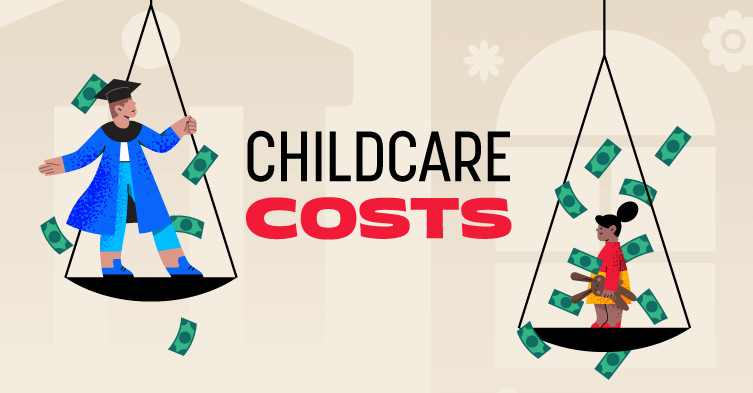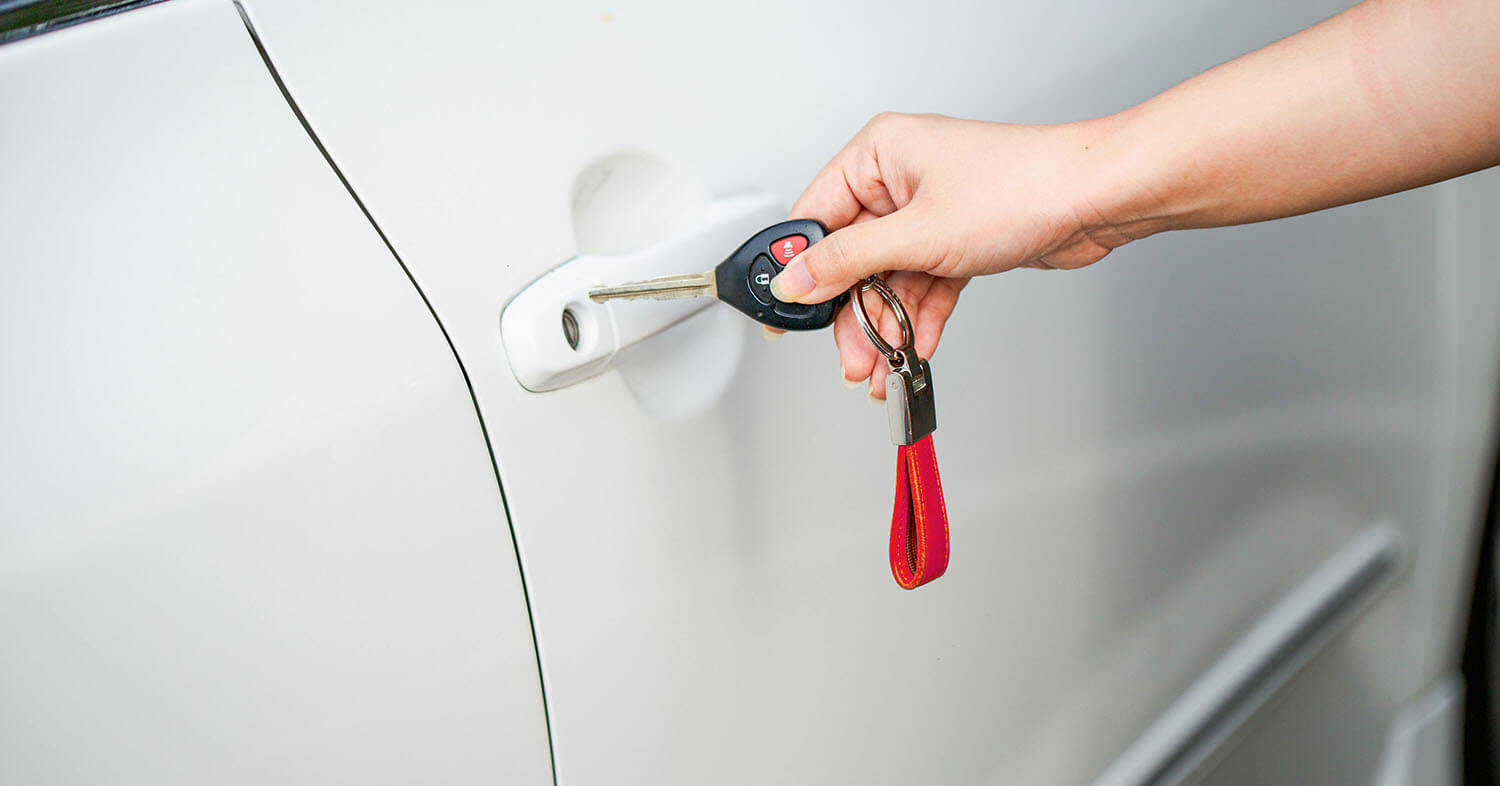Research shows that quality early childcare offers a wide range of important benefits. A relationship with a “consistent, caring adult” promotes “better academic grades, healthier behaviors, more positive peer interactions and an increased ability to cope with stress,” according to Prevent Child Abuse America. But childcare costs are soaring.
This presents a problem for parents, and it’s one that rivals another big cost at the other end of a child’s educational years: college. In fact, according to NetCredit’s research, childcare actually costs more than college in 28 out of 50 states.
To determine this, we analyzed the cost of childcare compared to in-state public college tuition around the country and factored in the affordability of each compared to local incomes. Here’s what we found.
What We Did
NetCredit researched the average annual fees paid for public and private college tuition and the average cost of childcare in each U.S. state. We calculated the difference in yearly fees paid for childcare and in-state college tuition. We then compared these costs to local average salaries to find the affordability of childcare and in-state college tuition in every state.
Key Findings
- Childcare is more expensive than in-state college tuition in 28 out of 50 states.
- On average, from state to state, childcare costs $1,031 more than public college tuition.
- In Hawaii, annual childcare costs $15,995 more than a year of in-state public college tuition — the biggest gap in the U.S.
- Childcare is most affordable in Utah, where annual costs are equal to 7.87% of the average annual salary.
Hawaii and New York Childcare Costs Eclipse College Fees
Hawaii and New York are neck and neck as the states where childcare costs emphatically more than college. Hawaii has it by a $44 margin, although New York childcare is the most expensive in absolute terms ($23,231 per year). Advocates in New York are pushing for a universal childcare system.
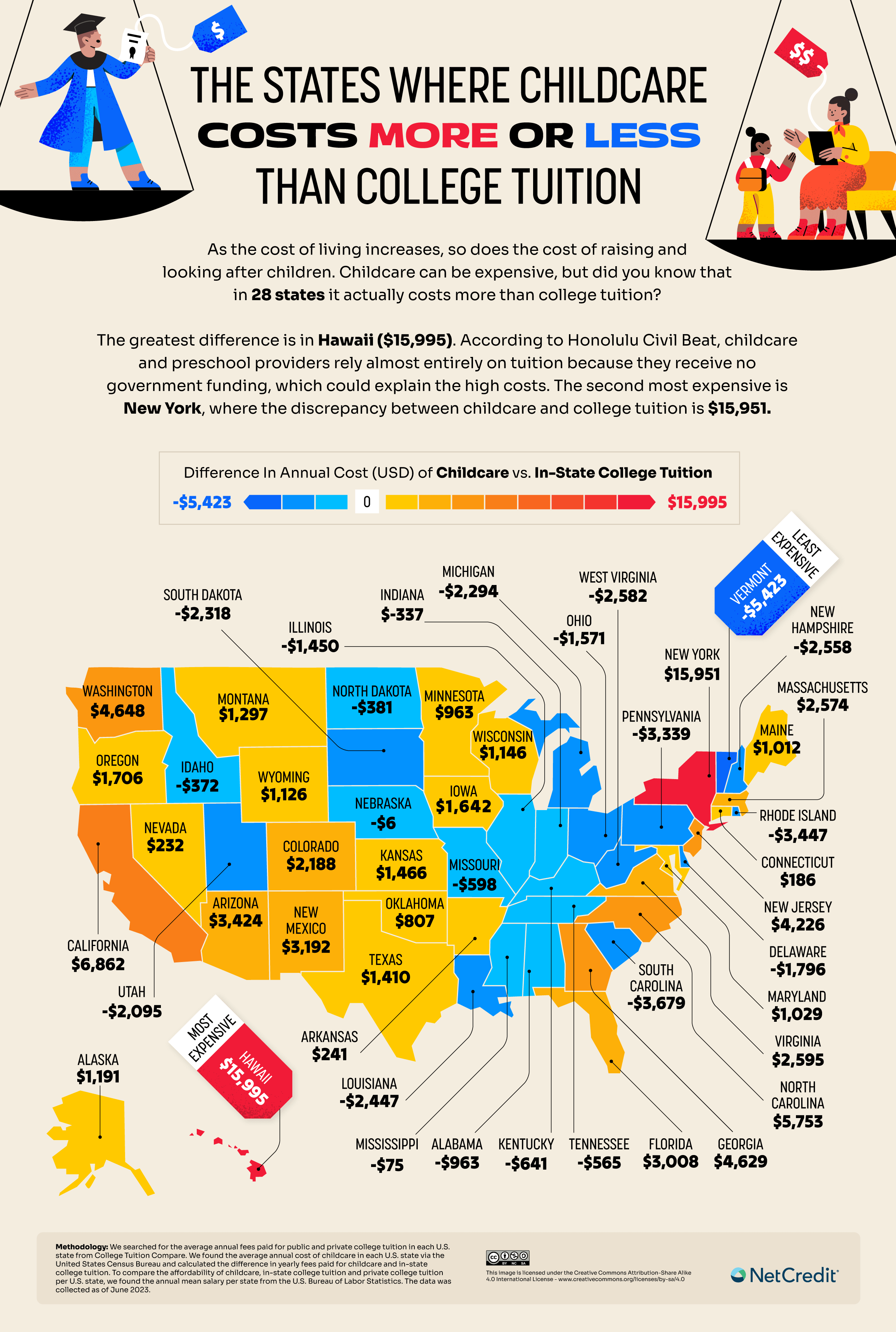
Click here to see the image in full size
While childcare is generally more expensive than college in coastal states, much of the Midwest and eastern U.S. is priced in favor of childcare. Most of these are due to higher-than-average college costs and lower-than-average childcare costs. But Vermont and Pennsylvania are more affordable for childcare since they have the most expensive public college fees in our study — childcare in these states is expensive, too, but not as expensive as college.
The Affordability of College and Childcare in Each State
Some 61% of children under 5 with working parents have regular childcare, averaging 33 hours per week among children under five with such an arrangement. Some rationalize this as an investment. “Just as I’d invested in my future by taking on debt for college, we are investing in our future earnings by devoting capital to child care in the short-term,” writes Lindsay Powers, whose childcare costs reached $50,000 per year at their peak. Lindsay further stated that, “We are also investing in our children’s futures by enrolling them in high-quality care.” However, the payoff for the child is mixed. Here are the investment costs of childcare in each state as a proportion of the local average income.
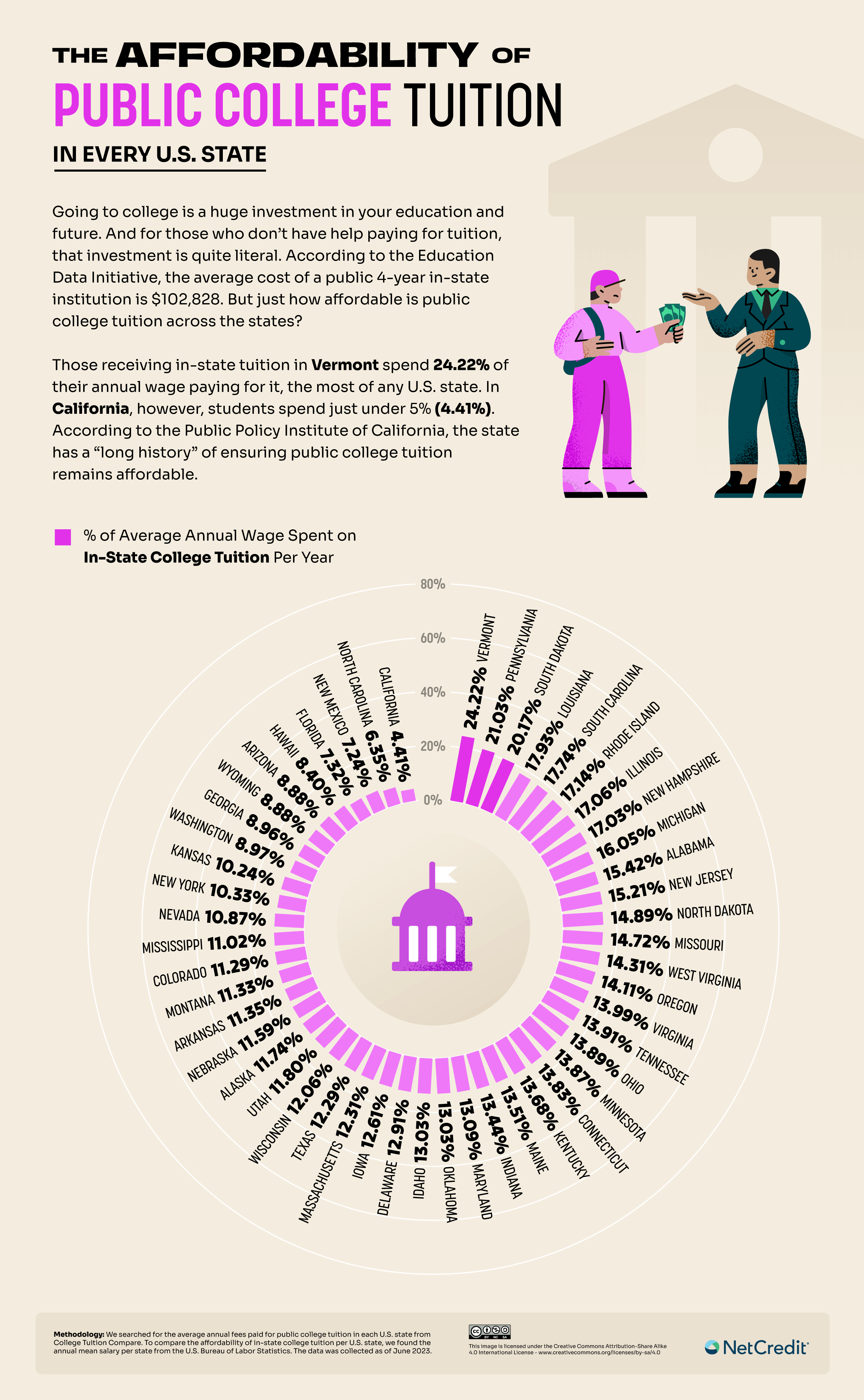
Click here to see the image in full size
The average salary in both Vermont and Pennsylvania is around $55,450, putting these states among the top 20 for average wages in the U.S. But public college costs are so high in these states as to make investing in a college education significantly less affordable than elsewhere. “About 6% of UVM’s budget is from the state, but in many states it’s 25-40%,” explains Richard Cate, vice president of finance at the University of Vermont. “Being a small rural state, we don’t have big business to help fuel tax revenue,” says Marie Johnson, director of student financial services.
Conversely, California pairs America’s cheapest tuition with the fourth-highest salaries, delivering the most affordable public college tuition of any state.
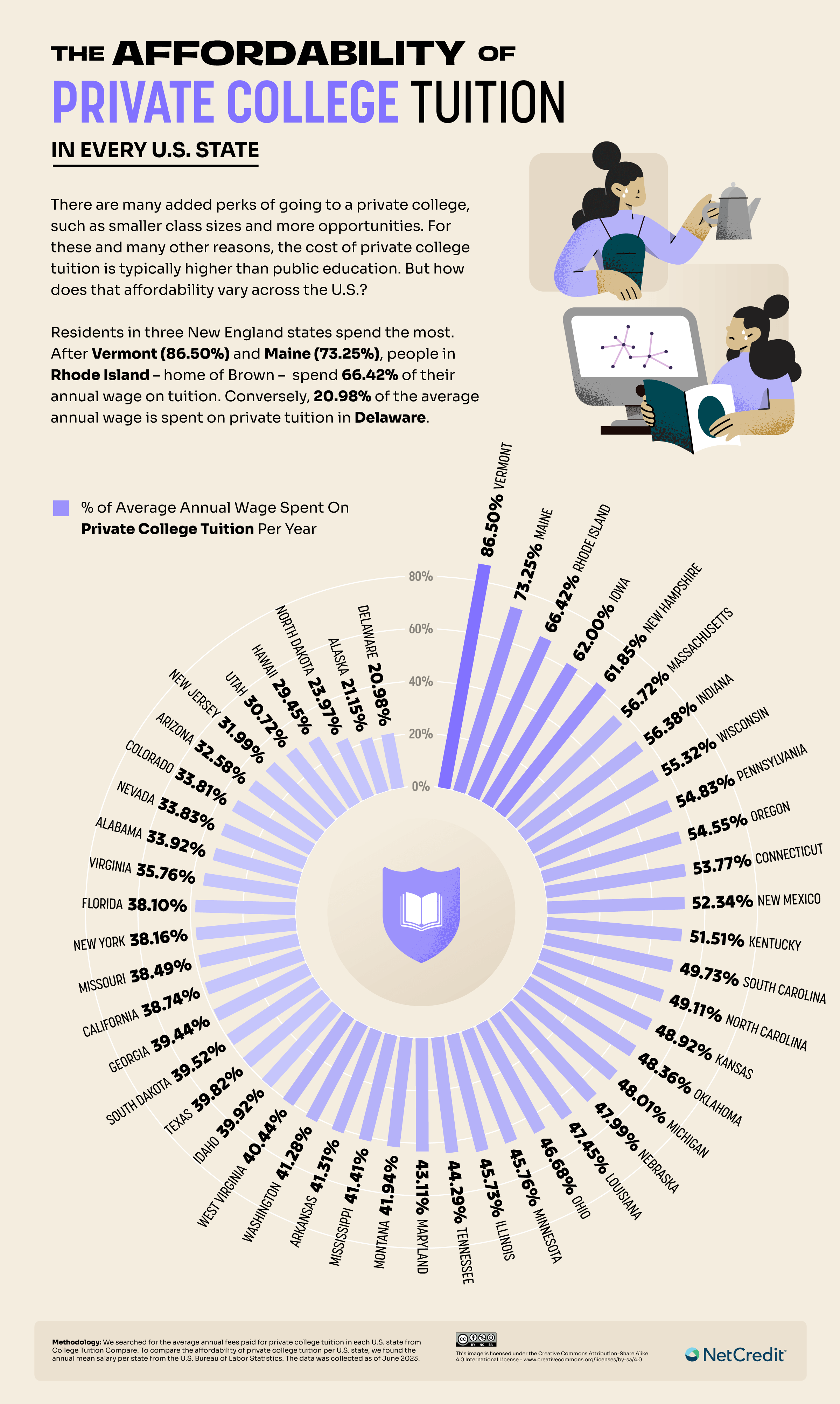
Click here to see the image in full size
Massachusetts is among the states with the least affordable private college education despite boasting the highest average salaries in the land. The rising costs of public education in Massachusetts, combined with those high salaries, make it feasible for private schools to raise their fees as they differentiate themselves from expensive public schools — which they do by passing the cost of smaller classes, closer faculty contact and top-level student welfare and career support onto students.
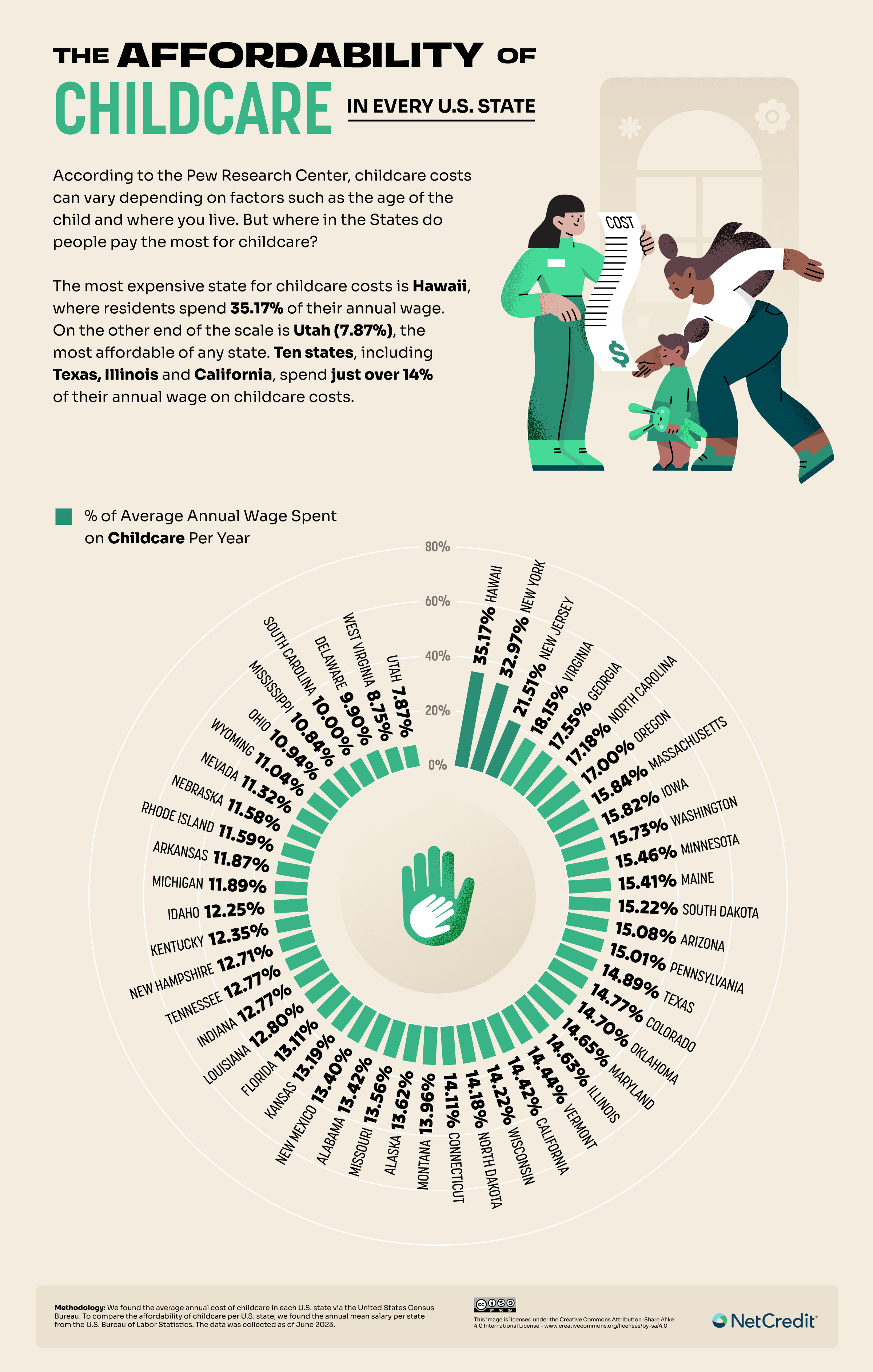
Click here to see the image in full size
Hawaii’s moderate salaries, top-bracket childcare costs and relatively affordable public and private college costs suggest a dream solution: invest personal parental time in preschoolers rather than send them to childcare, and save later for quality, affordable higher education. Indeed, some 43% of children in Hawaii receive childcare from friends or relatives. However, while some of these carers have found programs in which they can participate and learn along with their child, many are isolated at home and “can’t always access the funding and training critical to offering the best care possible during a pivotal time of children’s brain development,” according to Honolulu Civil Beat.
To see the full results of our research consult the table below:
METHODOLOGY & SOURCES
We searched for the average annual fees paid for public and private college tuition in each U.S. state from College Tuition Compare. We found the average annual cost of childcare in each U.S. state via the United States Census Bureau. Finally, we calculated the difference in yearly fees paid for childcare and in-state college tuition.
To compare the affordability of childcare, in-state college tuition and private college tuition per U.S. state, we found the annual mean salary per state from the U.S. Bureau of Labor Statistics. This enabled us to measure what percentage of each location’s annual salary would be spent on each expense.
Note: Private college tuition fee figures for Wyoming were unavailable for comparison.
The data was collected as of June 2023.


